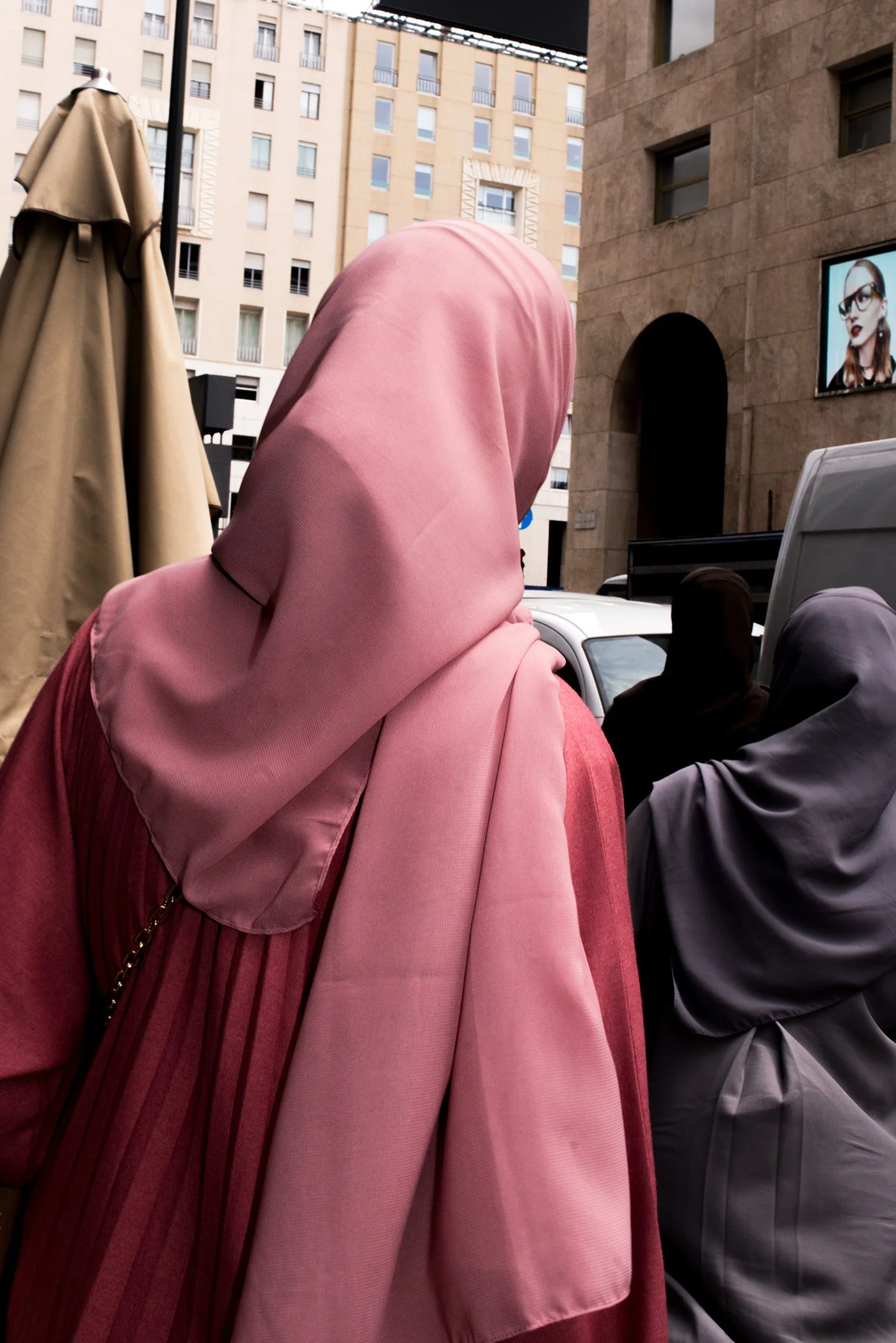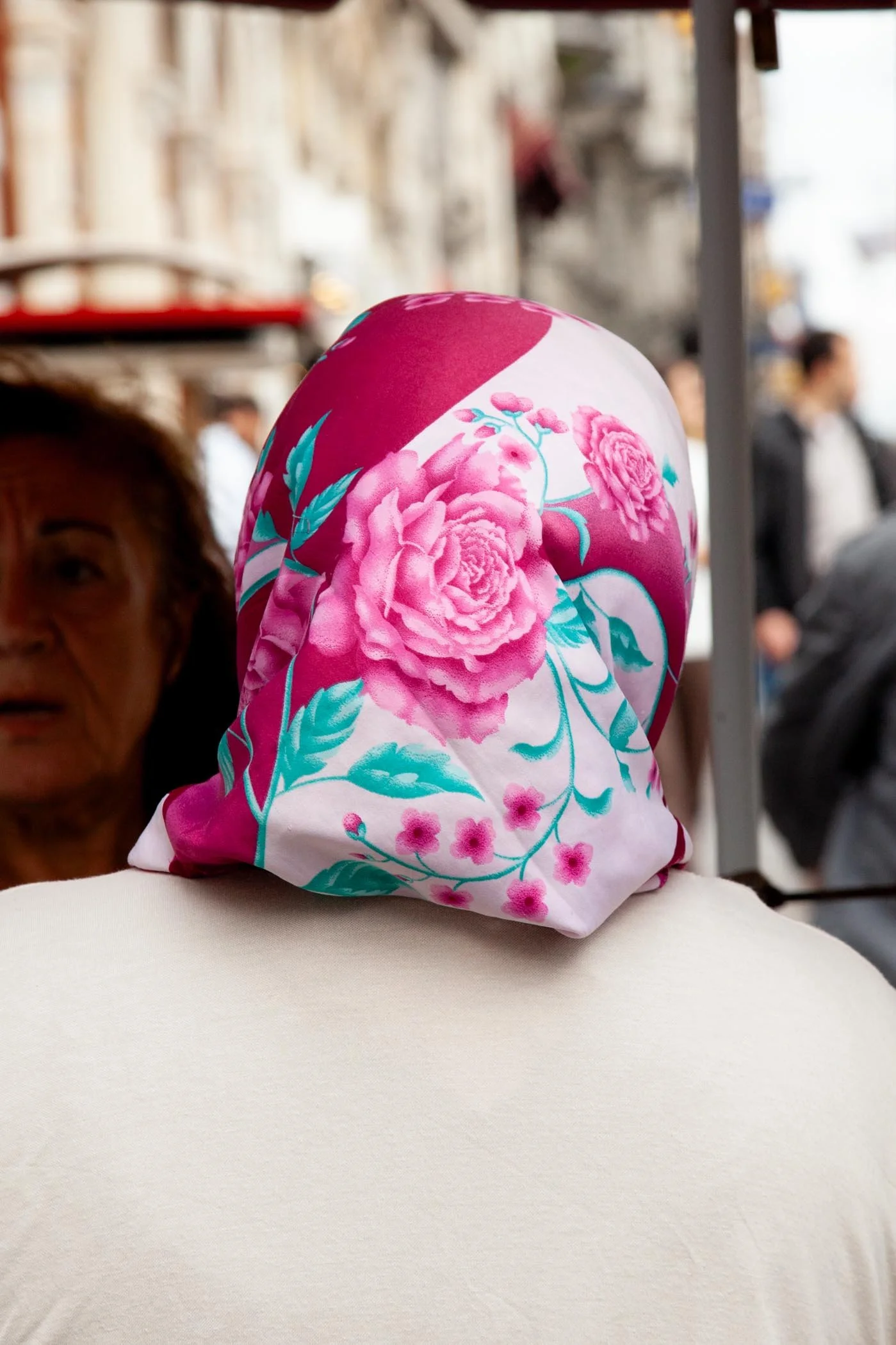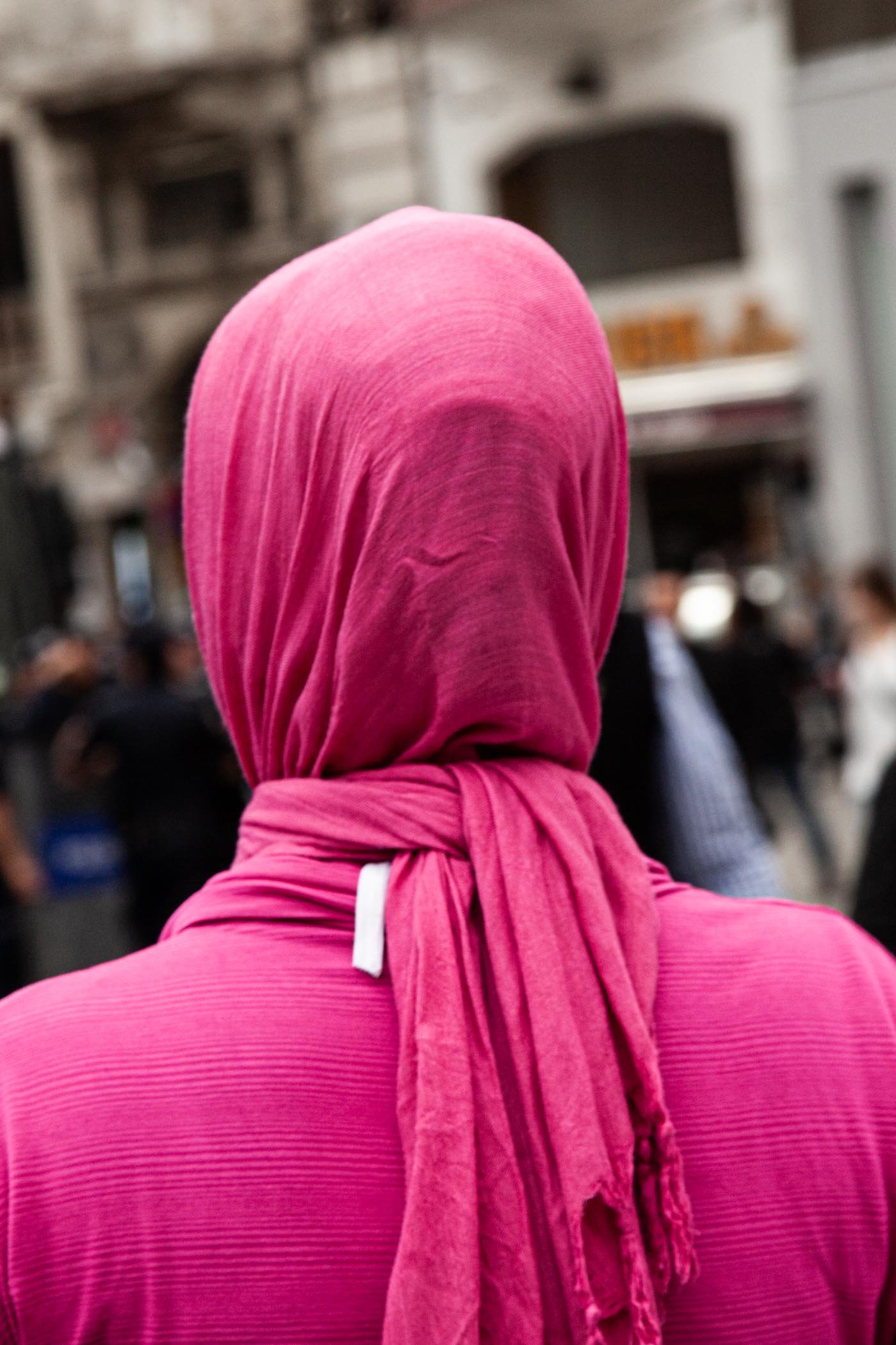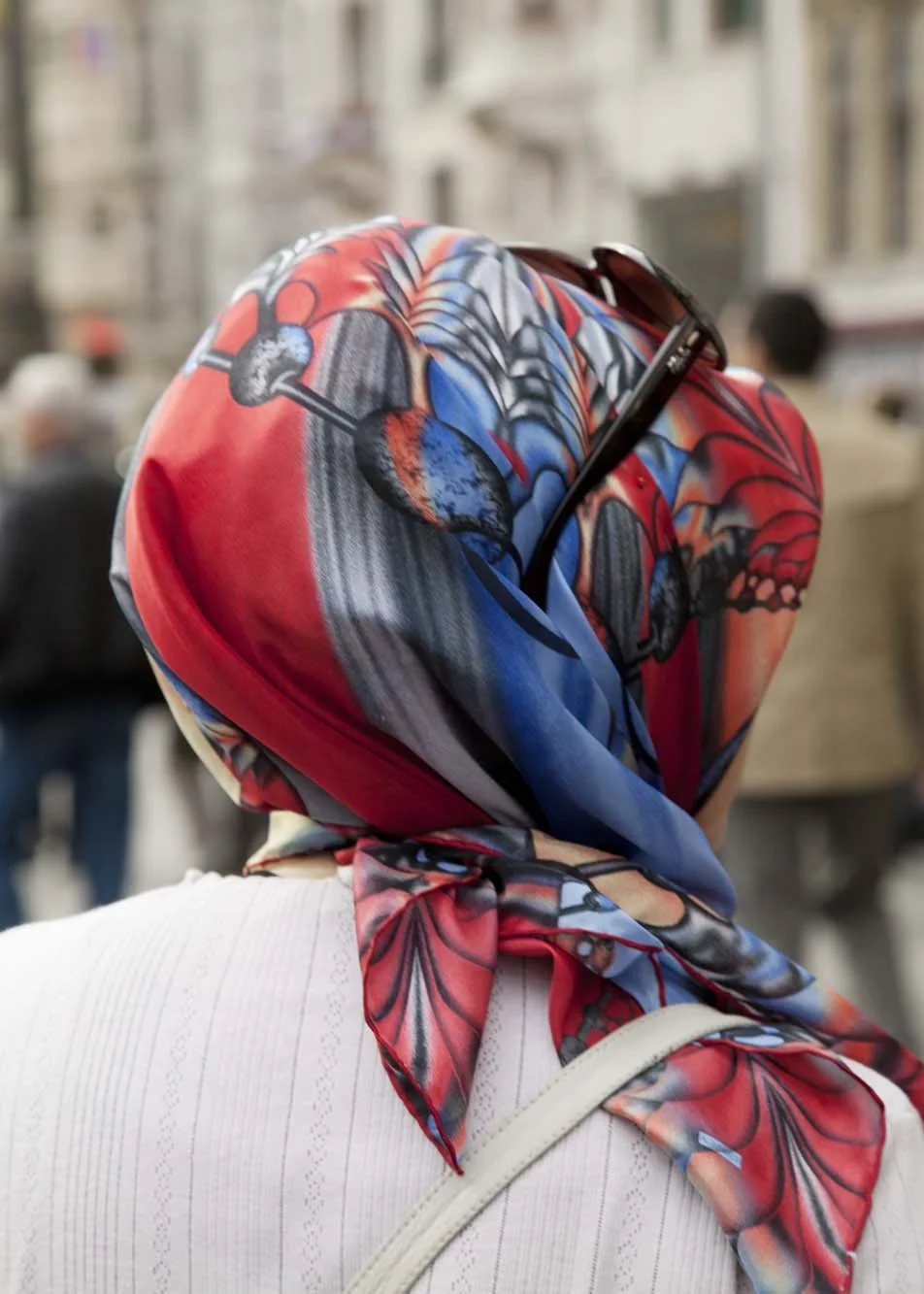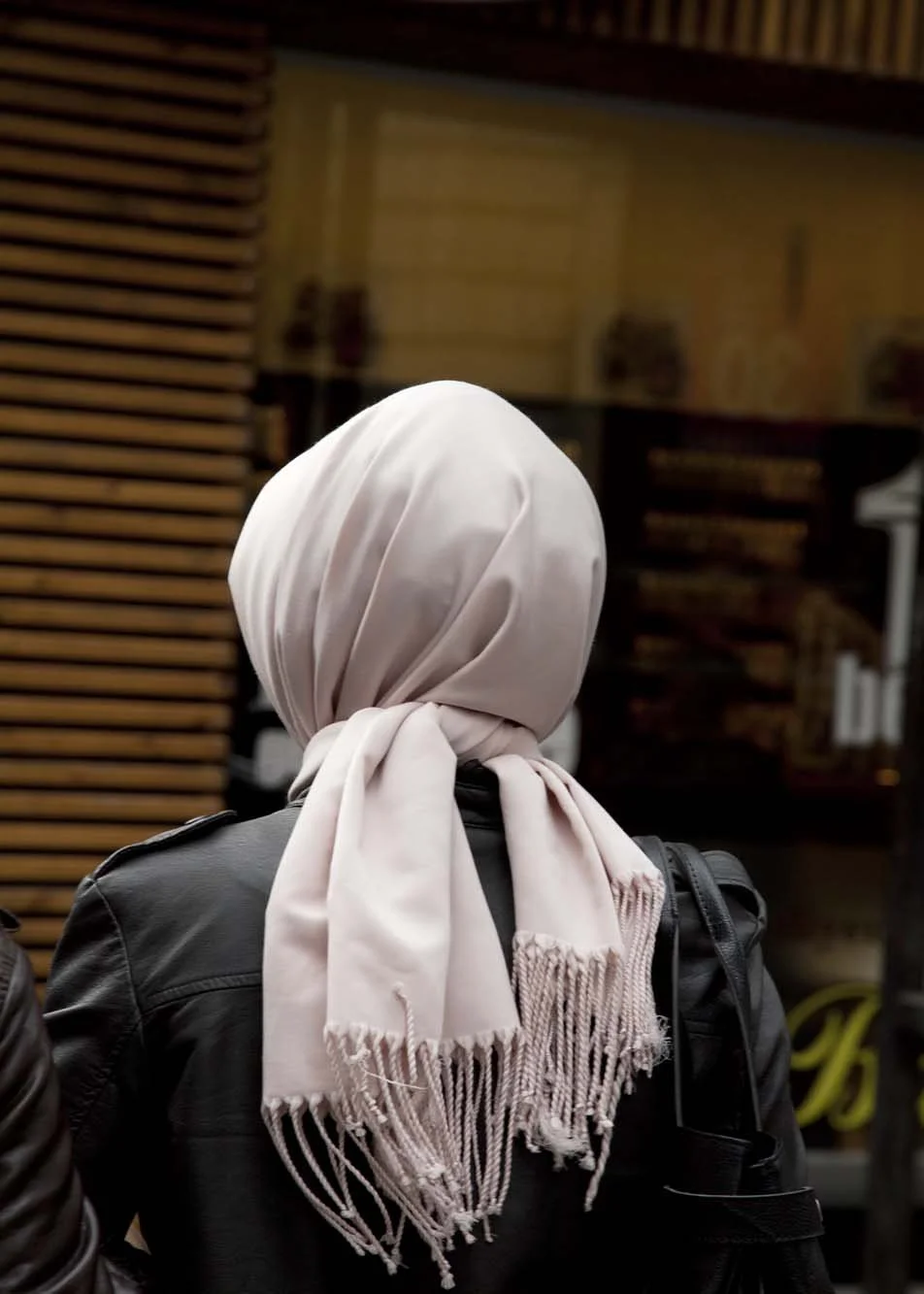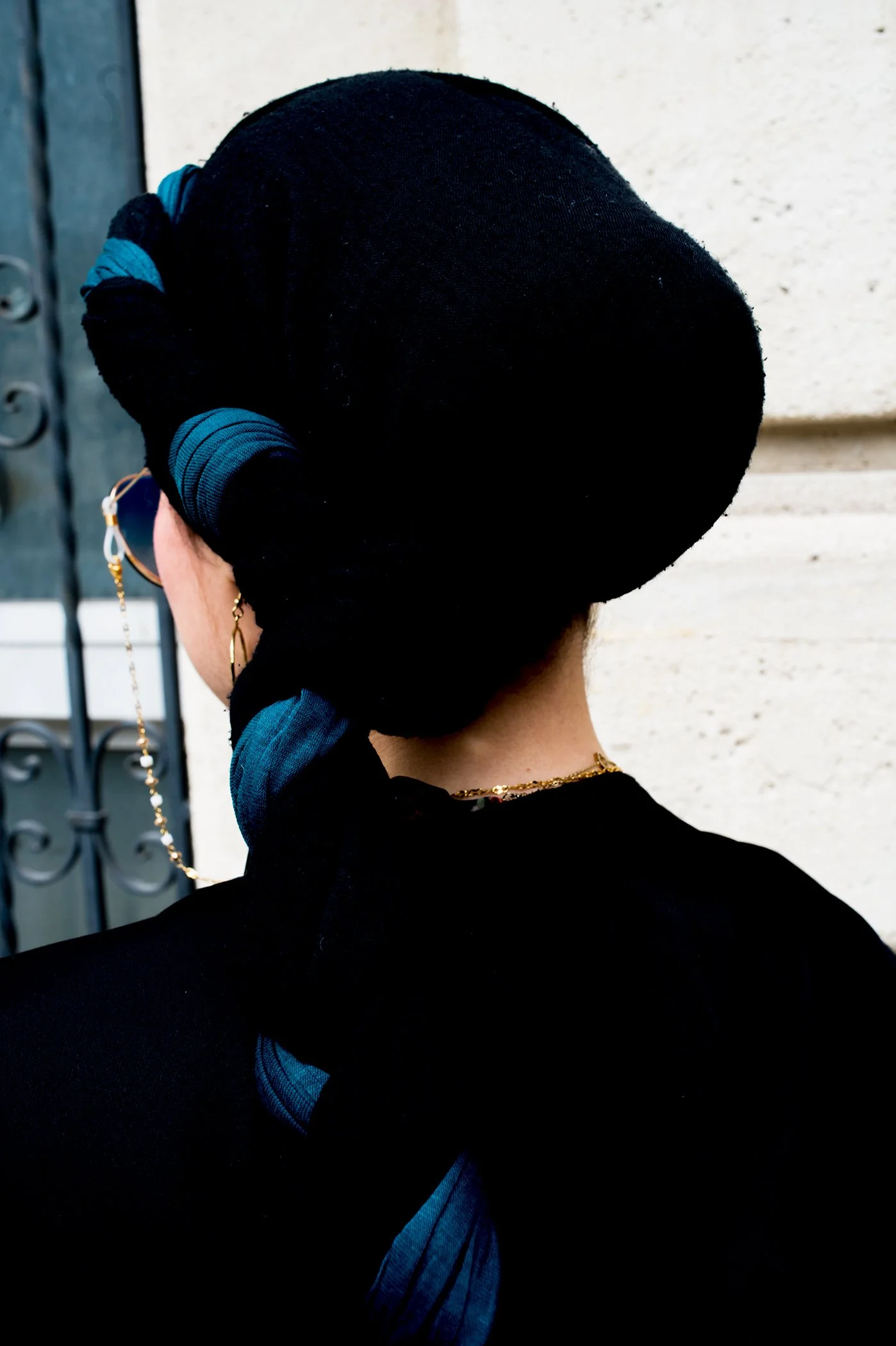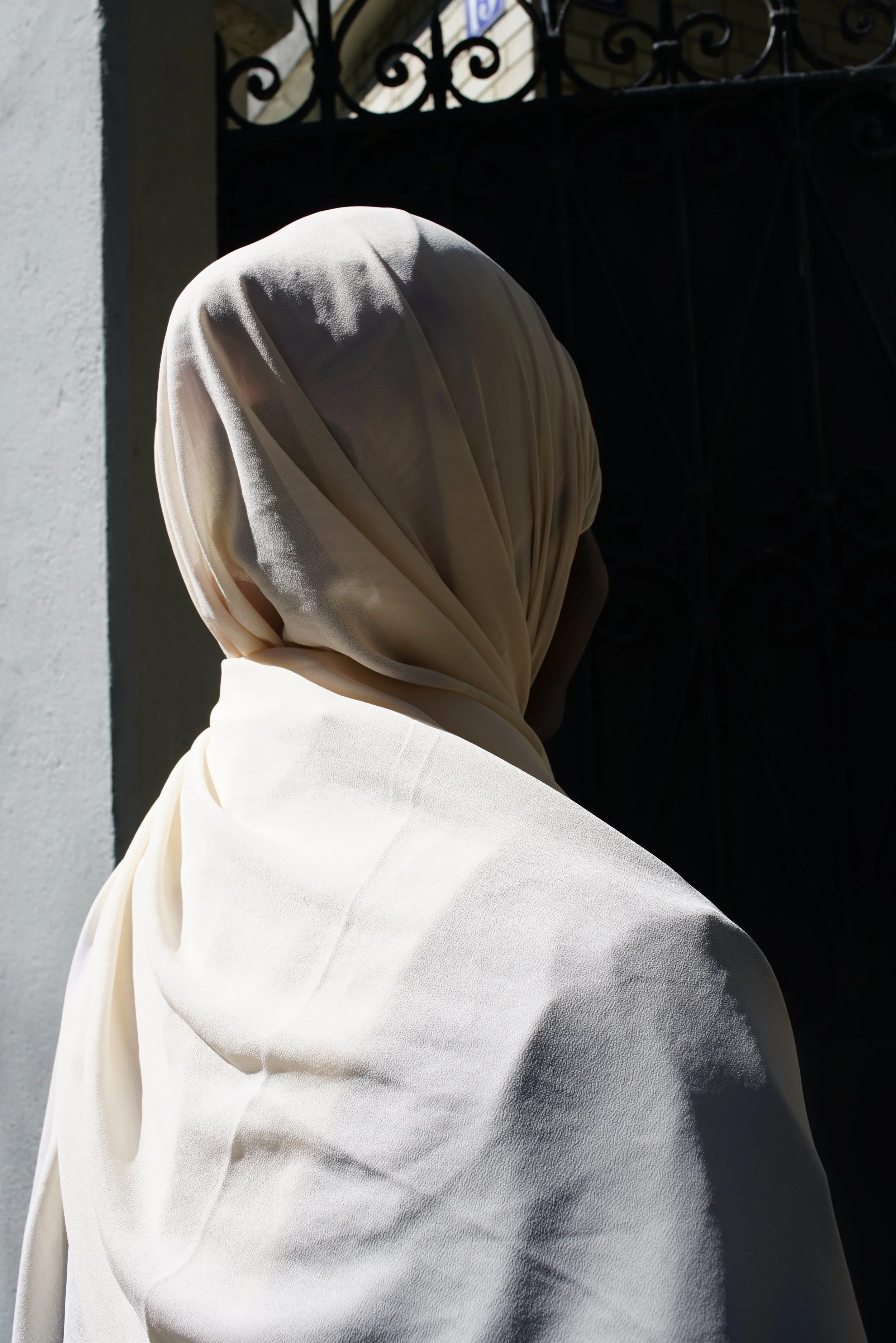In Subjective
In Subjective is a collection of images about the Islamic woman and the hijab in today's Europe as a symbol of contemporaneity. It represents the Islamic identity and its presence in public spheres. The hijab affirms public belonging to Islam, represents a link between “subjectivity” and public space, and a style. The veil, according to its shape, its material and the way it envelops the head, proposes a clear sign of identity while highlighting the Muslim woman. In this work, the possible religious connotation is left aside and the indicator of modesty and belonging to another culture is privileged. The hijab is thus read as an indicator of a modernity different from that of the West and also as a symbol of young, educated and fashion-conscious women who seek to vindicate the compatibility between Islam and contemporaneity. Body and subjectivity" are in harmony and not in conflict.
The women in these photographs become protagonists in the construction of a narrative that points to social relations through bodily practices in social space. The hijab traces the threshold between the public and the private, the licit and the illicit, the body and the imaginary. In these images of faceless women, anonymity becomes a central element for the investigation of a “new subjectivity” that manifests a different body politics, and the limits that must underlie social and gender relations.
Bibliography Ruba Salih (2015) Musulmane Rivelate, Wadud Muskin (1992) Qu'ran and Woman, (1992) Women Gender in Islm Historical Roots of a Modern Debate, Yale University London Christiansen (2003) Women's Islamicc Activism, New Brunswick, Gole N, Islam in Public Turkey, Iran and Europe, (1988) Duval, New Veils New Voices, Azmeh A (2007) Islam in Europe Diversity, Identity and Influence.
En Subjetivo
En Subjectivo es una colección de imágenes sobre la mujer islámica y el hiyab en la Europa actual como símbolo de contemporaneidad. Representa la identidad islámica y su presencia en las esferas públicas. El hiyab afirma la pertenencia pública al Islam, representa un vínculo entre la "subjetividad" y el espacio público, y un estilo. El velo, según su forma, su material y la manera en que envuelve la cabeza, propone una clara seña de identidad al tiempo que pone de relieve a la mujer musulmana. En esta obra se deja de lado la posible connotación religiosa y se privilegia el indicador de pudor y pertenencia a otra cultura. El hiyab se lee así como indicador de una modernidad diferente a la occidental y también como símbolo de mujeres jóvenes, educadas y preocupadas por la moda que pretenden reivindicar la compatibilidad entre islam y contemporaneidad. Cuerpo y subjetividad" están en armonía y no en conflicto.
Las mujeres de estas fotografías se convierten en protagonistas de la construcción de una narrativa que apunta a las relaciones sociales a través de prácticas corporales en el espacio social. El hiyab traza el umbral entre lo público y lo privado, lo lícito y lo ilícito, el cuerpo y el imaginario. En estas imágenes de mujeres sin rostro, el anonimato se convierte en un elemento central para la investigación de una "nueva subjetividad" que manifiesta una política corporal diferente, y los límites que deben subyacer a las relaciones sociales y de género.
Bibliografia Ruba Salih (2015) Musulmane Rivelate, Wadud Muskin (1992) Qu'ran and Woman, (1992) Women Gender in Islm Historical Roots of a Modern Debate, Yale University London Christiansen (2003) Women's Islamicc Activism, New Brunswick, Gole N, Islam in Public Turkey, Iran and Europe, (1988) Duval, New Veils New Voices, Azmeh A (2007) Islam in Europe Diversity, Identity and Influence.


